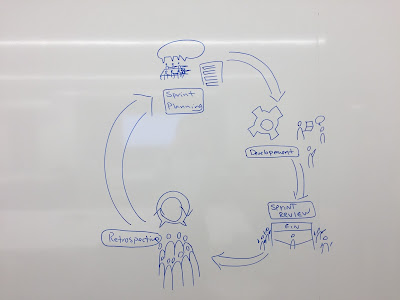I facilitated a session to simulate planning, development, feedback and iteration in an Agile fashion. I used a simulation called XP Game. This game originated based on the concepts introduced in eXtreme Programming book by Kent Beck. It provides a visual and interactive way to understand the values of XP, and to a wider extent Agile.
I am not going to elaborate on how I did run the session and what I learned. It is a very lengthy process to talk about. I want to talk about my observation facilitating the session.
I am very eager to receive feedbacks from the audience at the end of my sessions. Every time I am running a session, I am asking for feedback. I learned and improved myself a lot based on them. I strongly suggest you give it a try.
Let me give you a little background. I ran the XP Game session as a substitute for another facilitator that usually runs them. Let’s call him Chocolate King, as he loves chocolate a lot. Some of the participants in my session had taken part in the same session ran by Chocolate King earlier.
At the end of the session, I asked everyone to rate the session they’ve been part of from 1 to 5, with 5 the highest and write a comment if they want. The session got an average of 4.5 out of 5. There is still room for improvement. I would consider this as a session that provided value for the attendees.
 |
| Feedback Wall |
At the end of the session, I experimented with a new approach to receive feedback. I let everyone finish wiring their feedback and post them on the wall and without taking a look at the feedback wall, I started my experiment. I asked a few people personally for their feedback. I asked them in one-on-one style right after the end of the session, and I specifically aimed for the people that took part in the same session facilitated by Chocolate King.
The results were interesting. Three out of four people were comparing the session I ran with the session Chocolate King ran earlier. They were pointing out the differences between the two. As a Coach, I could have asked them questions about how the difference add value or not, I didn’t. Not that I didn’t value their feedback or way of thinking, but I wanted to see where do we get to. I called these kinds of situation Feedback Failure Mode.
In the session that I facilitated, I used new facilitation techniques that I have never used before. I was hoping to get some feedback on those, I didn’t. I had to explicitly ask one or two people about that. I got great feedback when I explicitly asked about a specific action that I took. It was great to hear those.
 |
| Scrum Visualization! |
At the debriefing, we ended up talking about the J-curve and how it is expected for new teams to go through that. These are the debriefing question I had written prior to the session to use for it:
- What challenges did you face?
- Tell me more about what you observed.
- What’re your thoughts on estimation?
- How did the implementation go?
- Any areas of improvement?
- What worked well and what didn’t?
- What story delivered fastest? Was it the one you estimated originally?
- What would you share with the customer at the end of the iteration?
- How estimation worked? Did it get more precise?
- How did velocity help?
- What have you learned?
- Run experiments
- How have you failed? and what would you do about it?
- How was the estimation?
- How is it going to change the backlog your experience in the first iteration?
 |
| J-curve for new teams |
To learn more about the game in detail head to the XP Game page. Also, you can find detail instruction on how to run it with all the material necessary!